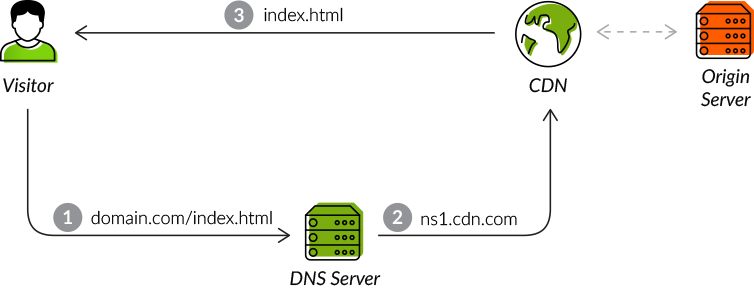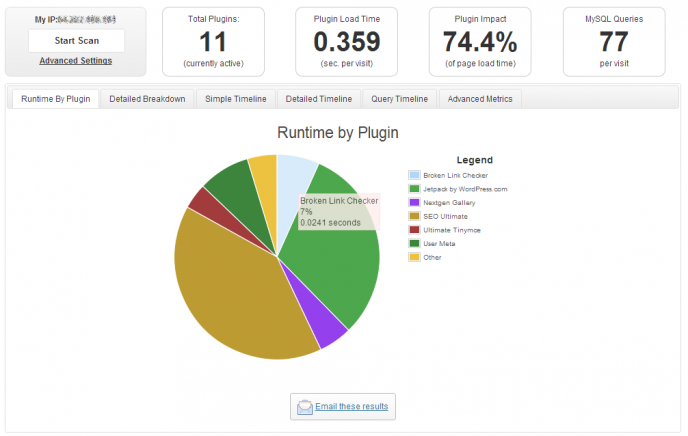Nothing is worse than waiting around for a website to load, especially when you are trying to find information or to purchase something. It’s even worse if you are the actual owner of a slow loading site and potentially losing out on thousands of daily visitors and lost revenue as a result of it.
People today have the shortest attention spans ever. If your site isn’t fully loading within 3-seconds, you might as well not have a website at all. No one is going to wait around for your website to load when there are so many other options out there.
The importance of having a fast loading website is something I’ve already covered many times before, so this time I want to give you a solution on how to get it done. At the same time, I don’t want to give you so many solutions that you are simply overwhelmed with the process and forget to take immediate action — so I will just give you three of the best working methods to implement today.
3 Quick and Surefire Ways to Improve Your Site Loading Time
Before implementing any of the steps below, be sure to run a website speed test. Document how fast your site is currently loading, then after using any or each of the methods below, run the speed test again to see how your site performance has improved.
Use a Content Delivery Network
A content delivery network is a network of cache servers that make a copy of your website and allow people around the world to access servers located closest to them. The closer a server is to an individual trying to access a website, the faster it will load for them, while also using less resources. We all know that websites, databases, images and WordPress all put a massive amount of stress on hosting services and the more complex your site, the longer it is going to take to load.
While the process of understanding what a CDN is and how it works is quite complex, the good news it that it’s very simple to set up. In most cases, this is often done with a WordPress plugin and changing a few nameserver settings.
To see the actual process of how a CDN network works alongside your site and server, be sure to check out the infographic below.

In addition to improving page speed and making your site load faster, certain CDNs can also help block spammers and bots from attacking your site, reduce bandwidth consumption, lower hosting and services costs and also protect websites from DDoS attacks. A good example would be Incapsula’s CDN which is integrated with HTTP/2 and DDoS protection features, making it a security enriched CDNs. Make sure to research well before enrolling with a CDN provider.
Change Your Web Hosting Provider
At their core, most web hosting solutions are pretty much the same. Most shared hosting plans will range from $5 to $10 per month, and throw a bunch of sites on a server and host all of the content for you. This is great if you have a simple website and don’t really care how fast it loads or are simply on a limited budget to host your site.
However, the reason for your site loading so slow could also be a result of your hosting provider. Since most shared hosting plans are cheap and issued at a mass scale, its easy for your site to get weighed down by other sites sitting on your same server.
A better option might be to upgrade your hosting to a dedicated server, a VPS or a private server hosting plan. There are plenty of options available for hosting your site, and the more advanced and limited you get with your hosting, the higher the monthly costs will likely be.

A good example of this would be A2 Hosting, which was rated #1 in SPEED by HostingFacts.com. A2 Hosting is probably the exception to most other shared hosting plans, as they offer a “Turbo” plan, which boasts speeds of up to 2o times more than other sites.
Another option to consider when looking for a hosting provider is to see if they actually have a CDN option built within their platform. It’s rare, but there are a few solutions out there.
Eliminate the Clutter from Your Site
The third method for quickly improving the performance and speed of a WordPress site is to simply remove the clutter. Just like a computer builds up with junk over time and slows down in speed, a website, and its database will likely do the same.
With WordPress powering a great majority of sites on the internet today, it’s important for site owners to realize that removing unwanted and unused plugins from their dashboard area can greatly improve the performance of their sites. The same is true about outdated and unused WordPress themes.

You might be surprised to learn it, but drafts, revisions and blog comments can also slow down your site as well. All of these elements come into play when looking at the overall speed and performance of your site.
To help with the clean up of your site, try downloading P3Profiler and it will let you know what plugins are using how many resources and putting the most stress on your server. Also be sure to check out this image optimization guide for how to reduce loading time by making your images smaller in size.
Improve Your Loading Time and Improve Your Site
As you can see, there are plenty of ways to improve site loading time and each are unique in their own way. The more time effort you focus on improving these key areas of your site, the better your site will load, perform and rank in the long run. Best of all, if you aren’t sure how to set any of them up, there are plenty of resources out there for you to follow.
While cleaning up your site’s database, optimizing images and removing old plugins might not be the sexiest of topics for a blogger… it’s definitely something everyone needs to consider. Google ranks websites in the search results based on their speed, and if you are trying to outrank the competition, you are going to want to have the fastest site possible.
Implement these three performance tips today and have a faster loading website tonight!
Click Here To Download John Chow’s New eBook, The Ultimate Online Profit Model!
